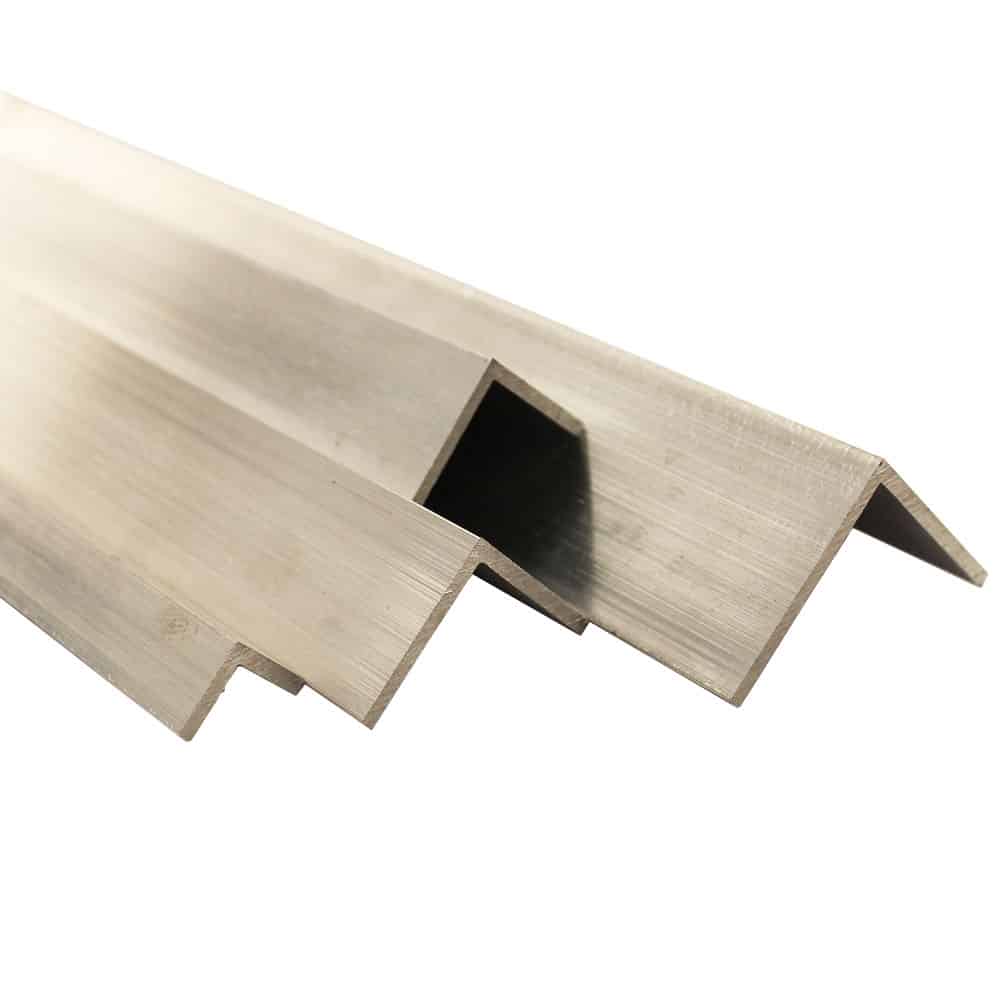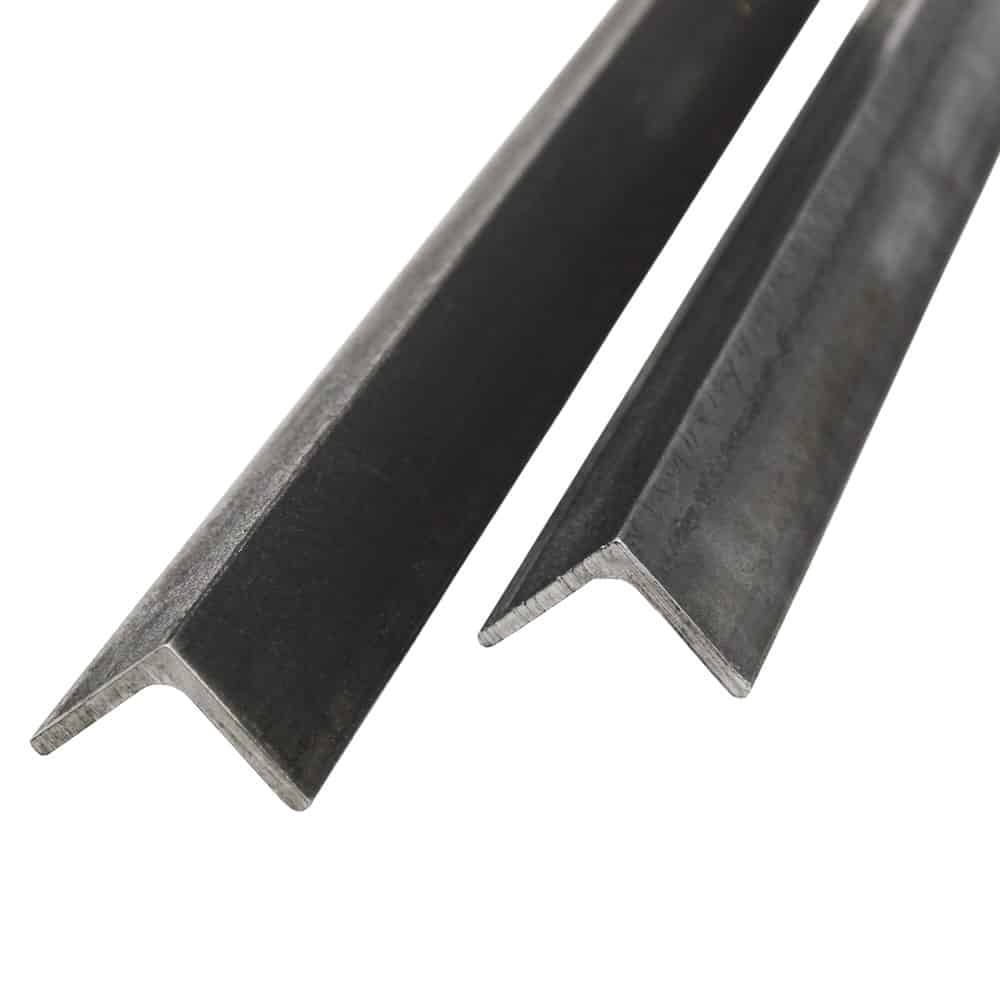- Massive Range
- FREE UK Delivery
- Rapid Dispatch
- Massive Range
- FREE UK Delivery
- Rapid Dispatch
- Massive Range
- FREE UK Delivery
- Rapid Dispatch
£17.99 – £29.99 inc VAT


This website is secured:
✔ Specialists In Rapid Shipments Of Any Size
✔ FREE UK Delivery Included
✔ Immediate Express Dispatch From Stock
✔ Tracked Delivery with Order Updates
✔ 30-Day Returns Accepted
£ Check Out Our Clearance Listing For Savings
@ ☏ Bespoke Sizes & Larger Sheets Available
Looking for a versatile and reliable angle steel bar section? Look no further than Speciality Metals’ Mild Steel Angle Steel Bar Section! Crafted from high-quality DC01 grade mild steel, this 20mm x 20mm x 3mm bar section is perfect for a wide range of applications, from construction to manufacturing to DIY projects. Whether you’re building a new structure or making repairs, the strength and durability of mild steel will ensure that your project stands the test of time.

Our top-quality angle steel is cut, packed and shipped by our terrific team in Warrington, UK within 24 hours. We pride ourselves on our speed for orders of all sizes.
Mild Steel Angle Steel Bar Sections, like the one offered by Speciality Metals in 20mm x 20mm x 3mm and DC01 grade, are incredibly versatile pieces of construction material. The L-shaped design of these angle steels allows them to be used for a wide range of applications, from providing structural support in buildings to being used as edging or fencing.
We also offer this size angle in 304 grade stainless steel. This will give additional resistance to corrosion.
We also carry a wide range of mild steel sheet metal, flat bar and round tube.
Mild steel is our most popular metal option.
Speciality Metals is known to be the United Kingdom’s best up-and-coming small-quantity metal company.
Furthermore we stock a vast range of plain sheet plate options that compliment our mesh range perfectly.
Over 50,000 customers of Specialty Metals are provided with fast, friendly customer service every year. We’re the place to try when you need metal of any shape and size. We’re based in Warrington, UK. We pride ourselves on our rapid turnaround and a large range of options.
Yes, you can bend angle iron, but it requires specialized tools and techniques. Angle iron, also known as an angle bar or L-bracket, is a robust and rigid material. To bend it, you will generally need a mechanical force that is greater than what can be applied by hand.
The two most common methods for bending angle iron are using a manual or hydraulic pipe bender or a metal press brake.
Here’s a basic outline of the two methods:
Using a Pipe Bender: A pipe bender can be manual or hydraulic. They are typically used to bend tubes and pipes, but can also bend angle iron. The angle iron is placed in the machine, and then the machine is operated to apply force to bend the angle iron to the desired angle.
Using a Press Brake: A press brake is a machine tool for bending sheet and plate material, and can also bend angle iron. The angle iron is clamped between a punch and a die, and the machine is operated to press the punch into the angle iron to create the bend.
The success and accuracy of the bend also rely heavily on the thickness of the angle iron, the angle of the bend, and the radius of the bend. It’s essential to keep in mind that bending angle iron can create weak spots in the material, especially if it’s not done correctly.
DC01 is a grade of cold-rolled steel, also known as mild steel. It is fairly straightforward to paint, but like any metal, the surface must be properly prepared to ensure good adhesion and prevent rusting. Here are some general steps:
Clean the Surface: The first step is to clean the angle thoroughly. Use a cloth and a mild detergent solution or a specially formulated metal cleaner to remove all dirt, grease, and oil. This is crucial because paint will not stick well to a dirty surface.
Remove Rust and Scale: If the steel angle is rusty or has scale, you need to remove it before painting. You can use a wire brush, sandpaper, or a chemical rust remover to do this. If using a chemical rust remover, make sure to follow the instructions on the product label.
Prime the Surface: Priming is a key step in painting steel. The primer will provide a base for the paint to adhere to and will help prevent rust. Choose a high-quality primer designed for use on metal. Apply the primer with a brush, roller, or spray can, ensuring all surfaces are evenly covered. Allow it to dry completely before applying paint.
Paint the Surface: Once the primer is dry, you can paint the steel angle. Use a paint that is designed for use on metal and is suitable for the conditions the metal will be exposed to. Apply the paint in thin, even coats, allowing each coat to dry before applying the next. It’s usually best to apply at least two coats of paint for a durable and attractive finish.
Seal the Surface: This step is optional, but for added protection, especially in outdoor applications, you can apply a clear sealant over the painted surface.
Check out our recent article about all things mild steel angle iron for a deeper dive into all things angular iron.
We are also very proud of our ever expanding YouTube channel.
Our goal for our blogs and help guides is to answer as many questions as possible to help to explain the possibilities of mesh to our customers. Contact us today if you have any questions at all. We are always really keen to help in any way that we can.
We are also very proud of our highly popular eBay store, check us out there too.
Thank you for checking out our product.
£10.99 – £13.99 inc VAT
£13.99 – £21.99 inc VAT

£10.99 – £13.99 inc VAT

£13.99 – £21.99 inc VAT
Speciality Metals
Unit 1, Farrell Street, Warrington,
Cheshire, WA1 2WW, United Kingdom
Quick Links
Payment Options
